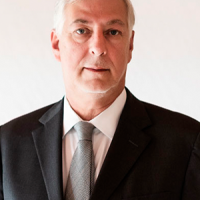
This article examines three key themes related to the constitutional reform that would militarize Mexico’s National Guard (NG), further consolidating power in the Executive Branch. It should be noted that militarizing public security is just one part of President López Obrador’s much more far-reaching agenda: transforming the current democratic regime into a populist and authoritarian one, where the armed forces assume an increasingly prominent role and power.
1. Do we really know what the NG is?
Since its creation in 2019, the NG has been caught in a profound contradiction between its declared civilian nature (a condition demanded by the opposition parties to ensure compliance with Article 21 of the federal Constitution, which states that public security is a civilian task) and the President's determination to make it a military organization. This tension is blatant: military personnel, commanders, and equipment the NG operates in military barracks, yet it was initially dependent on the Secretariat of Security and Civilian Protection (SSPC).
This has resulted in significant budgetary, administrative, and labor simulations. Although the guards were not supposed to be military personnel, they were seconded by the military. However, since they retained their military status, they could not function as police officers. This prevented them from making arrests or drafting standardized police reports, as such actions would be deemed illegal and invalid in court. Additionally, the actual cost of the National Guard remains unclear, with the budget reported on ambiguous terms by the Secretariat of Defense (Sedena) and the SSPC. The number of guards is equally uncertain: while the official figure is 133,000, there are no more than 37,000 positions, implying that around 100,000 soldiers are posing as guards.
The NG's resistance to anything civilian has grown stronger. They not only discriminated against and humiliated the few federal police officers who tried to join the NG but also expelled those few who remained; the proposed reform calls for their immediate transfer—without a position—to the SSPC. Contradictions and the grand simulation of the composition of the National Guard continue to build. The situation escalated to defying a ruling from the Supreme Court of Justice, which ordered the NG—currently illegally attached to Sedena —to return to the SSPC as of last January, an unfulfilled directive.
To complicate the scenario further, the NG's mission has never been clear. It has been tasked with everything from guarding Mexico City's subway system to distributing construction materials in Acapulco. While it has a territorial presence in 260 regions across the country, it does not guard the highways, as evidenced by the surge in theft of goods on federal highways to unprecedented levels since 2015. Moreover, it has not dismantled any criminal organizations despite operating checkpoints in areas of extreme violence and insecurity—often just feet away from checkpoints set up by criminal groups. What exactly are their orders? Are they tasked with overseeing rural regions or border areas? No one seems to know. Their primary activity appears to be detaining migrants in the country's southeastern region. In short, the NG remains an institution without a clear mission, mandate, or set of directives.
Thus, we should first focus on transparency and accountability to understand fully what the NG is, how it is structured, its mission, and what it does. Additionally, it remains unclear how the constitutional violation will be addressed, as Article 21—not amended in the proposed reform—mandates that institutions responsible for public security must be civilian. Despite this, authorities insist, without hesitation or shame, that the NG will remain a civilian institution, even though it is part of the military, led by military commanders, composed entirely of military personnel, and operates within a military structure, discipline, and hierarchy. They claim that the civilian aspect will stem from providing police training instead of military training. If this holds, we will have military personnel performing police duties. This contradiction with the constitutional mandate seems to raise little concern.
2. Is a military National Guard the right institution to address Mexico's security and violence crisis?
Let us assume—though it is a rather ambitious assumption—that one day, the military NG under Sedena’s control will indeed have 133,000 members (with their dedicated positions, not soldiers merely switching uniforms) and receive some form of police training. We must consider why it is inappropriate for a military institution to be responsible for public and civilian security. Here are a few reasons:
a. The logic of the military is not the same as that of a civilian police force. Even if they receive police training, guards who were originally soldiers (at least 100,000 of them) and have military training will, at best, combine the military logic (eliminate the enemy) with the police logic (apprehend the suspect). In the worst case, the former will prevail (e.g., shooting at civilians who fail to stop at checkpoints). It may be more effective to train new police officers from scratch rather than attempting to change the "military mindset" of current guards.
b. Military logic centers on centralized command, blind obedience, and strict hierarchy, which contrasts with the need for coordination and collaboration between federal, state, and municipal levels of government. Adequate public security requires coordination, not only as a legal obligation but as a practical necessity. However, recent experience in Mexico has shown the challenges military forces face in genuinely accepting coordinated or shared command. The military tends to disdain civilian police forces and distrust their institutions (as was evident in their treatment of federal police officers). They have displayed similar attitudes toward state police.
c. Dismantling the 250 criminal gangs (aside from drug cartels) operating across Mexico requires intelligence and knowledge that only local police forces possess—something the military often overlooks. Without strong, reliable, and effective local police, the NG’s efforts will be insufficient. Successful cases of reducing violence and insecurity (in Ciudad Juárez, Monterrey, La Laguna, Tampico, etc.) were driven by local initiatives, using bottom-up models with broad citizen participation and close collaboration with municipal and state authorities, in stark contrast to centralized military approaches.
d. Dual command and operations present another challenge. Under the proposed reform, the SSPC would formulate the National Public Security Strategy and related programs, policies, and actions. However, it would lack the operational capacity to implement them, relying instead on military command. While military commanders are expected to follow presidential orders to adhere to the strategy and coordinate with incoming SSPC Secretary Omar García Harfuch, experience shows that these dual-command systems often lead to serious coordination problems. Initial cooperation may be smooth, but tensions and conflicts will likely arise over time, particularly at lower levels of both secretariats.
e. A final concern with militarization is the risk of organized crime infiltrating the military, which is traditionally the State’s last line of defense for upholding constitutional order. It is undeniable that during the current administration, criminal organizations have made significant progress in attempting to capture state institutions through violence or collusion with political parties and officials. Suspicions of complicity involving mayors, governors, and party leaders, along with the increasing involvement of criminals in elections, reflect a growing relationship between politics and organized crime. In this context, how can we ensure that the military or NG will remain free from corruption? The consequences of such corruption would be severe.
3. Militarize the security relationship with the United States?
Coordination between the US and Mexico to increase the effectiveness of security policies and produce results in terms of impact (reduction of violence, more fentanyl seizures, dismantling of criminal organizations, etc.) and management (exchange of intelligence, strengthening of security institutions, etc.), requires:
a. Rebuilding trust. After General Cienfuegos´ detention and sudden release, Mexico´s laws against the DEA, the simulation of the efforts against fentanyl, and the confusing rendition/kidnapping of Mayo Zambada, trust between both governments is practically non-existent. Supposing there is no radical change to the policy of “hugs and not bullets” and no real and deep strategy to attack the conspiracy and corruption of civilian and military authorities with criminal organizations, the US will hardly believe in Mexico's willingness to cooperate, and there will not be much trust in the new government. The Sedena may not have a problem with the end of the “hugs,” but its willingness to investigate and sanction criminal organizations remains to be seen. Likewise, if the US does not stop unilateral actions and investigations against Mexican officials and military based purely on statements (without hard evidence) of drug traffickers turned protected witnesses, Mexico will similarly struggle to trust its neighbor.
b. Coordination between agencies in each country and the actual leadership of each government. In Mexico, the operational part of security is military (GN), and the command is civilian (SSPC). This will generate permanent tension due to the military culture of disregarding any command outside the military except the head of the Executive. This dynamic will likely lead to a dispute over the coordination of the relationship with the US government. In addition, it may also create conflicts in the cross-border relationship, as on the US side, such conflicts are in the hands of civilian agencies (DEA, DHS, FBI, etc.) and not the Army. This raises the question of who will lead the operational relations with the NG: the DEA and the agency with which it has long nurtured a relationship of conflict and mistrust. Or will it be the Northern Command? It is also the case that US agencies give greater importance to operational matters (capture of capos), so the direct relationship with the NG, the Army, or the Navy will be a priority over the relationship with García Harfuch, who is poised to become the head of the Mexican government in security relations.
These objections to the militarization of the NG and public security do not rule out the possibility of eventual success. However, this reform likely means that success will be much harder won. This means more human rights violations and steep social and political costs. Upending the command structure of the NG will prolong the harm and suffering of millions of Mexicans affected by different forms of violence and property crime; it will further weaken civilian security institutions, unnecessarily complicate collaborative relations with the US, and worsen the imbalance between civilian and military power, tipping in favor of the military, which poses significant risks to Mexico’s already fragile democracy.
Author




